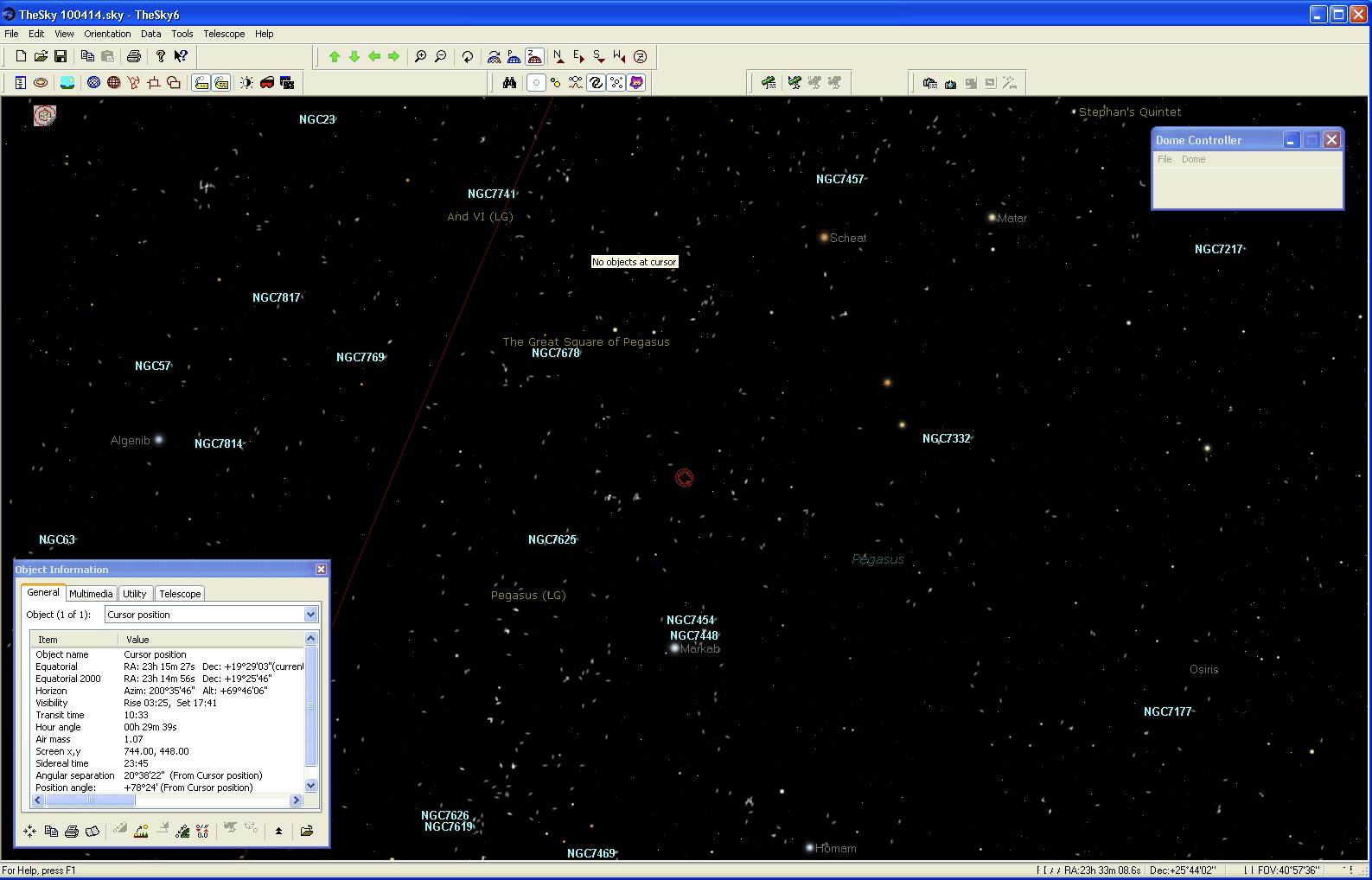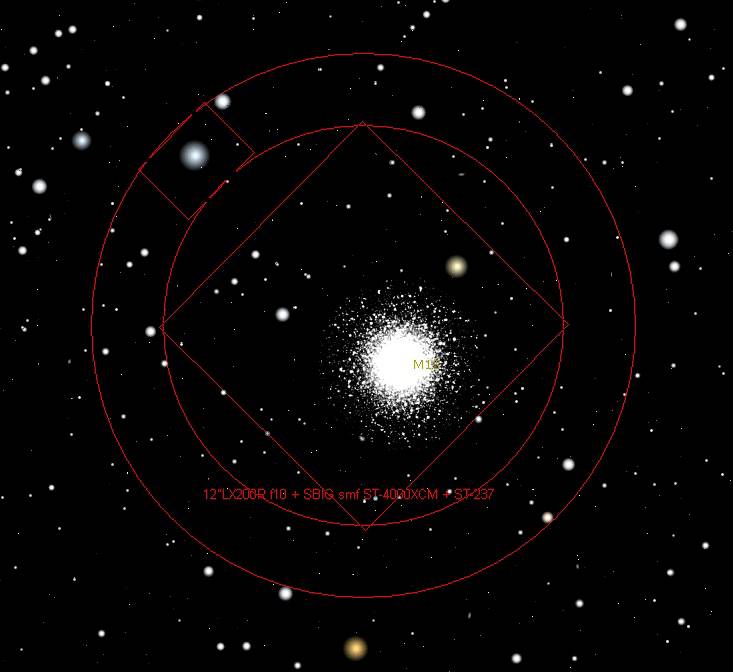TheSky6 Professional, by Software Bisque, is the most popular "planetarium" program being used by amateur astronomers. TheSky6 enables finding and identifying objects anywhere in the sky, zooming from the entire sky to tiny areas of the sky, and controlling the telescope - for example, pointing the scope at a specific object. The accuracy of pointing is primarily based on the accuracy of knowing the scope's position (geographically) and current time, as well as the capability of the mount (plus any corrective pointing software, such as tPoint). Clicking on any object in TheSky6 brings up a small window (far left bottom in the image below) that provides information on the object, including its position (both equatorially, and in alt-az coordinates); the rise, transit and set of the object; the object brightness and size; a picture of most objects; and much additional information. TheSky6 can download current data for asteroids, comets, and man-made satellites, and can even track low earth orbit ("LEO") satellites, such as the space shuttle and International Space Station ("ISS"). The image below shows a typical set-up of TheSky6 (this happens to be in the daytime, as the sun is in the image). At the far upper right is a small window that controls the observatory dome - enabling tracking of the dome slit with the telescope, as it follows the astronomical object through the sky (i.e., counteracting the rotation of the earth, so that the object appears "still" to the camera, allowing a long time exposure). |
 |
The small reddish object in the center of the image above is the field of view ("FOV") indicator. When the image is zoomed in, the FOV indicator enables seeing what the telescope and camera will see - i.e., how big the field will be, where the object will be centered, AND - very importantly for a long focal-length (i.e., high magnification) telescope: the angle of the guide chip, relative to the main chip, and relative to the stars. When imaging a very small field (at 3200mm focal length, and with my camera chip size, my total imaging field is only 15 arcminutes (i.e., 0.25 degree) square; if it is desired to use adaptive opitcs to control the scope, a relatively bright star is required, and most small areas of the sky don't happen to have a bright enough star. The brighter the star, the faster the AO can operate (up to about 30 times per second) - which allows partial correction for disturbances in the atmosphere (which is what makes stars "twinkle"). Therefore, one must center the object AND rotate the camera so that a suitable guide star is centered on the guide chip, as shown on the image below. |
 |
Note here that in order to place the very bright star in the center of the guide chip, it was necessary to offset the globular cluster on the main imaging chip. I could have selected a much dimmer star which allowed exact centering of the object on the main chip, but then the AO would have run slower, allowing less correction during a long imaging run. In "olden days" (about 5 years ago, prior to amateurs having adaptive optics), scopes were corrected during exposures using a guide camera, but only making corrections once every few seconds. Today, using AO, corrections are made in a fraction of a second. Therefore, the guide star exposure must be significantly reduced, thus requiring rather bright guide stars - typically in the 6-9 magnitude range. While the AO will work with magnitude 10-12 stars, the correction rate would be much slower - for example, once per second, rather than 10 times per second. This will correct for errors in the mount, but will not be fast enough to correct disturbances in the atmosphere. [the disturbances in the atmosphere in the column of air along the optical axis of the scope moves across the diameter of the scope quickly, depending on the amount of wind, so corrections for this must be of the same timescale as the changing atmospheric conditions] |
 |
TheSky6 can also set-up mosaic images (to capture a wider section of the sky with high resolution). Above is a mosaic set-up for the Andromeda galaxy, with each frame being the field of view ("FOV") of the ST-4000XCM camera and 12" LX200R scope. In this case, 60 images must be taken to capture the entire galaxy. There is a small overlap between the images, so that they can be accurately combined. |
As of late 2010, Software Bisque has introduced the "professional" version of TheSkyX - the newest incarnation of TheSky, which was essentially a complete re-write of the software, and improvements to the user interface and other aspects. I will undoubtedly upgrade to TheSkyX soon, but have not done so, yet. |